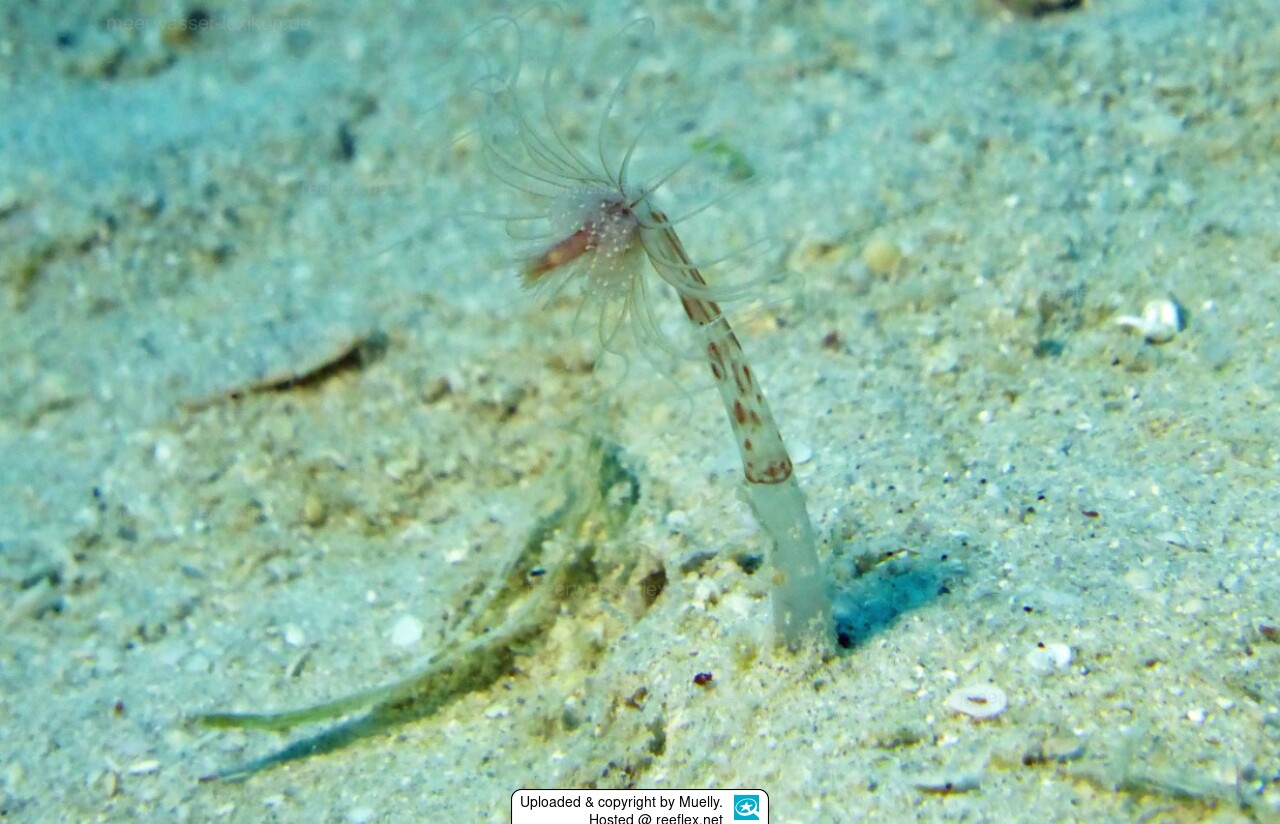Info
Corymorpha tropica Galea, 2023
A species only newly described in 2023. Holotype native to Indonesia, Bali, Amed, site known as Ghost Bay, 5-15 m, 04 Oct 2022, a 3 cm high fertile polyp and numerous newly released medusae .
The species name "tropica" from the Latin trŏpĭcus, meaning tropical, to denote its ecological affinities.
The new species is common in Southeast Asia. The stalk is conspicuously divided into two distinct parts: a papillary, light brown to orange part and a lower, bare, non-papillary part. The stem can be translucent to fully brick-red with occasional brick-red spots or irregular longitudinal bands. The generally contracted mouth is recognizable as a white cross. The base of all tentacles is translucent white. The scientific description also goes into great detail here about variants (... for some rare, depigmented individuals...).
The cnidarian has a free-living medusa stage that is released from the mother hydroid without gonads.
The polyps are found exclusively on sandy soils either singly or in small colonies consisting of a few large individuals essentially surrounded by many smaller offspring.
There is a possibility of confusion with Corymorpha tomoensis, which is significantly larger at up to 5cm and differs in other characteristics for which only science has a keen eye.
A species only newly described in 2023. Holotype native to Indonesia, Bali, Amed, site known as Ghost Bay, 5-15 m, 04 Oct 2022, a 3 cm high fertile polyp and numerous newly released medusae .
The species name "tropica" from the Latin trŏpĭcus, meaning tropical, to denote its ecological affinities.
The new species is common in Southeast Asia. The stalk is conspicuously divided into two distinct parts: a papillary, light brown to orange part and a lower, bare, non-papillary part. The stem can be translucent to fully brick-red with occasional brick-red spots or irregular longitudinal bands. The generally contracted mouth is recognizable as a white cross. The base of all tentacles is translucent white. The scientific description also goes into great detail here about variants (... for some rare, depigmented individuals...).
The cnidarian has a free-living medusa stage that is released from the mother hydroid without gonads.
The polyps are found exclusively on sandy soils either singly or in small colonies consisting of a few large individuals essentially surrounded by many smaller offspring.
There is a possibility of confusion with Corymorpha tomoensis, which is significantly larger at up to 5cm and differs in other characteristics for which only science has a keen eye.







 Muelly
Muelly


